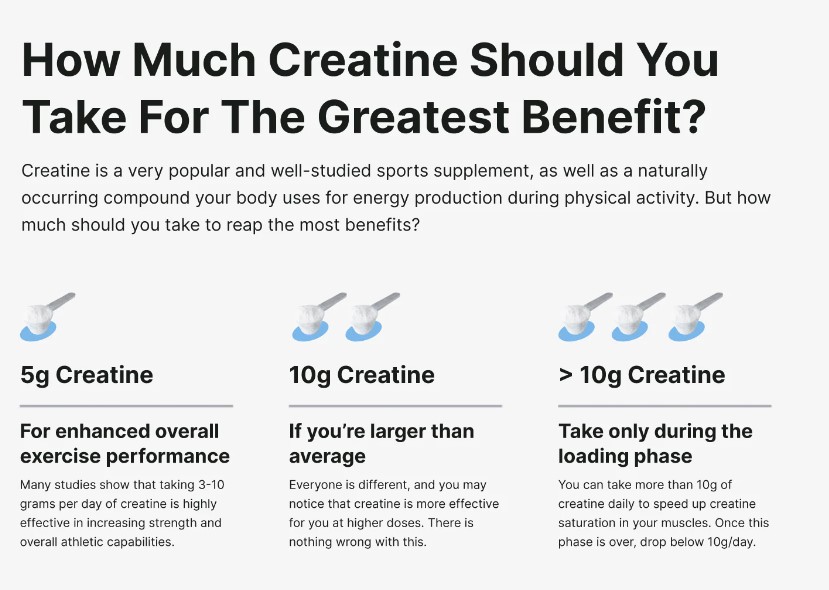BOURSESSENEGAL – If you’re looking to enhance your athletic performance, you’ve probably heard about creatine. Many athletes and fitness enthusiasts use it to boost strength, power, and muscle mass. But knowing how to take creatine correctly is essential to maximize its benefits. In this guide, we’ll cover everything from what is, how it works, the best methods for taking it, and common misconceptions.
What is Creatine?
A Brief Overview
Creatine is a naturally occurring compound found in small amounts in certain foods and produced by the body. It’s primarily stored in muscles, where it plays a crucial role in energy production during high-intensity exercise. When you supplement with , you increase your muscle stores, leading to improved performance.
How Creatine Works
Creatine enhances your body’s ability to produce energy rapidly. During short bursts of intense activity, phosphate donates a phosphate group to adenosine diphosphate (ADP) to regenerate adenosine triphosphate (ATP), the primary energy carrier in cells. More ATP means more energy for workouts, resulting in improved strength and muscle gains.
Benefits of Taking Creatine
1. Increased Muscle Mass
One of the most significant benefits of creatine supplementation is muscle growth. Studies show that can help increase muscle mass when combined with resistance training. This happens because allows you to lift heavier weights and perform more reps, promoting muscle hypertrophy.
2. Enhanced Strength and Power
Athletes who take creatine often report improvements in strength and power. This is particularly beneficial for high-intensity sports like sprinting, weightlifting, and football.
3. Improved Exercise Performance
Creatine can enhance performance in various types of exercise, especially those that require short bursts of effort. Activities such as sprinting, jumping, and weightlifting can see significant improvements when using.
4. Faster Recovery
Some research suggests that creatine supplementation may help reduce muscle cell damage and inflammation following intense exercise. This means you might recover faster between workouts.
How to Take Creatine: The Basics
1. Types of Creatine
Before you start, it’s essential to choose the right type of creatine. The most studied and effective form is monohydrate. Other forms include ethyl ester, buffered , and hydrochloride, but they often don’t provide additional benefits over monohydrate.
2. Dosage Recommendations
Knowing how to take creatine involves understanding the proper dosage. The common approach includes a loading phase and a maintenance phase:
Loading Phase
- Duration: 5-7 days
- Dosage: 20 grams per day, split into four 5-gram doses.
This rapid loading saturates your muscles with creatine. However, if you prefer to skip the loading phase, you can take a lower dose continuously.
Maintenance Phase
- Duration: Ongoing
- Dosage: 3-5 grams per day.
This helps maintain elevated levels in your muscles.
3. Timing Your Intake
Timing can play a role in maximizing the benefits of creatine. Many people prefer taking post-workout, often with a source of carbohydrates and protein to enhance absorption. However, taking it at any time of day is effective as long as you remain consistent.
4. Mixing Creatine
typically comes in powdered form. You can mix it with water, juice, or your post-workout shake. Some prefer to combine it with a carbohydrate source to spike insulin levels, which can improve absorption.
5. Staying Hydrated
When supplementing with , it’s vital to stay well-hydrated. draws water into muscle cells, so drink plenty of fluids throughout the day to avoid dehydration.
Common Misconceptions About Creatine
1. Creatine Causes Weight Gain
While can lead to weight gain, this isn’t necessarily a bad thing. The weight gain often comes from increased water retention in muscles and muscle mass itself, not fat.
2. Creatine is a Steroid
is not a steroid. It’s a naturally occurring substance that helps with energy production. It doesn’t alter hormone levels or have the same side effects as anabolic steroids.
3. You Must Cycle Creatine
Some believe that cycling (taking it for a period and then stopping) is necessary. However, research indicates that continuous use is safe and effective. You can take it year-round without needing to cycle off.
Potential Side Effects
While creatine is generally safe for most people, some may experience side effects, such as:
- Gastrointestinal discomfort: Some users report bloating, cramps, or diarrhea. Taking smaller doses throughout the day can help minimize this.
- Dehydration: As draws water into muscles, it’s essential to stay hydrated.
- Kidney concerns: While research shows is safe for healthy individuals, those with pre-existing kidney issues should consult a healthcare provider before starting.
When to Consider Stopping
If you experience significant gastrointestinal issues or feel unwell while taking , consider discontinuing use and consulting a healthcare professional. Always listen to your body.
Conclusion
Understanding how to take creatine is essential for maximizing its benefits. With the right dosage, timing, and hydration, can be a powerful tool in enhancing your athletic performance and promoting muscle growth. Whether you’re a seasoned athlete or just starting your fitness journey, can help you reach your goals. As always, consult with a healthcare provider or nutritionist if you have any questions or concerns about supplementation. Happy training!
REFERENCE : https://www.health.com/



